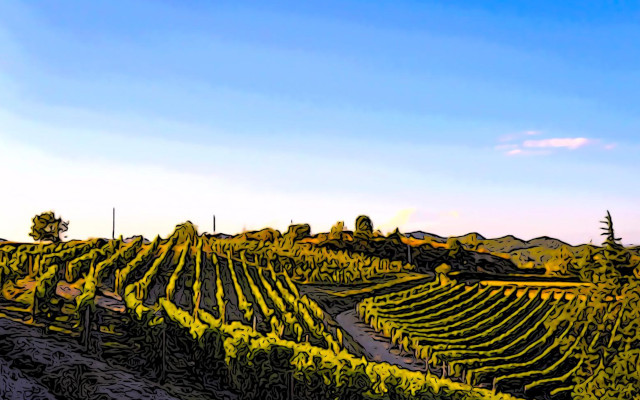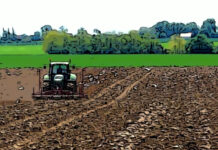The Ministry of Agriculture, Food Sovereignty and Forestry (MASAF) has defined ‘the requirements and conditions for the establishment and recognition of organic districts,’ or biodistricts, by Decree No. 28.12.2022. 663273. (1)
The document implements the ‘provisions for the protection, development and competitiveness of organic agricultural, agribusiness and aquaculture production’ referred to in Law 23/2022, Article 13. (2) ABC to follow.
1) Biodistricts, or biological districts. Introduction
‘Organic districts’ constitute ‘food districts’ (3) as well as ‘local production systems, including of
Interprovincial or interregional character, with a strong agricultural vocation, in which they are significant:
(a) the cultivation, raising, processing and food preparation, within the territory identified by the biodistrict, of organic products in accordance with relevant regulations;
(b) organic primary production occurring in a supra-municipal area, that is, including areas belonging to several municipalities’ (Law 23/2022, Article 13.1).
1.1) Integration on the ground, restrictions on the use of pesticides and herbicides
‘Biological districts are also characterized by:
- ‘integration with other economic activities in the area of the district itself and due to the presence of landscaped areas
relevant, including national and regional protected natural areas (…) and areas included in the “Natura 2000” network’, - ‘the limited use of plant protection products within them. In particular, public agencies may prohibit the use of herbicides for cleaning streets and public areas and establish compensatory facilities for businesses’.
‘Conventionalfarmers shall adopt necessary practices to prevent accidental pollution of organic crops'(Law 23/2022, Art. 13.2).
1.3) Participants
‘ Local authorities, either individual or associated, that adopt policies for the protection of organic production, environmental defense, agricultural soil conservation and biodiversity defense, as well as research organizations that carry out scientific activities in the field may participate in the organic district’ (Law 23/2022, Art. 13.3),
In turn. ‘organic districts shall promote the establishment of operator groups, based on the provisions’ in reg. EU 2018/848, (4) in order to implement forms of group certification’ (Law 23/2022, Art. 13.11).
1.5) Objectives. Ecosystems
The goals for the establishment of biological districts are:
‘a) Promote conversion to organic production and encourage the sustainable use of natural and local resources in agricultural production processes, as well as ensure the protection of ecosystems, supporting design and innovation to serve acircular economy,
(b) Stimulate and facilitate the territorial approach to the conversion and maintenance of organic production (…) so as to safeguard the environment, health and local diversity,
(c) to simplify, for organic producers operating in the district, the application of organic certification standards and environmental and territorial certification standards provided for in current regulations’ (Law 23/2022, Art. 13.5).
1.6) Objectives. Social and productive cohesion
The sustainability of biodistricts must also include social and economic goals:
(d) encourage the development, enhancement and promotion of the
Processes of preparation, processing and marketing of organic products,
(e) promote and support multifunctional activities related to organic production, such as the serving of organic food in public and collective catering, direct sales of organic products, agrotourism and fishery tourism, rural tourism, social agriculture, (5),
(g) promote and carry out participatory research projects with companies and the dissemination of innovative practices’ (Law 23/2022, Art. 13.5).
2) Biodistricts, requirements and conditions for establishment and recognition
Organic producer associations , with the support of the academy, have also worked extensively to define guidelines to be established in biodistricts (6,7). In fact, which, as we have seen, have already seen major developments starting in the regions of Central Italy. (8)
2.1) Organization
The organization of biodistricts or organic districts, according to the provisions of the ministerial decree, is as follows:
- promoting committee. ‘A grouping of actors, individual and associated companies, producer organizations, public and private entities, who wish to promote the establishment of a district
Organic for the dissemination of organic farming method,
farming and aquaculture, for its popularization as well as for the
Support and enhancement of sustainable management including of
activities other than agriculture’. Has the role of strategic guidance and coordination of activities, - managing entity. He is ‘identified by the promoting committee to represent the organic district until legal recognition is obtained from the region.’
- governing council. It is ‘constituted by the organic district after regional recognition to adopt the bylaws and organizational regulations of the entity,’ and is charged with the ‘representation of the administrative, economic and commercial instances of the district’ (DM 28.12.22, art. 2.1, letters g,i,j).
2.2) Biodistricts Protocol and Plan.
Preliminarily, the entities that constitute the promoting committee are required to enter into ‘in private writing’ and sign a Protocol where the strategic objectives of the organic district are defined. Which must include:
- Share of increase in utilized agricultural area (UAA) by organic method,
- Promoting synergies among operators to achieve group certifications,
- Prediction of impact on the conditions of environmental sustainability, quality of life and work, and economic viability of the organic district.
The Organic District Plan, on the other hand, is ‘a general planning document for the activities of the organic district that contains spatial analysis, needs, objectives, activities, the
expected results, the roles and interactions among participating parties, indicators for monitoring results’ and financial instruments (DM 28.12.22, Art. 2.1, letters k,m).
2.3) Small Local Productions, km0 and short supply chain
Not only organic operators (including in-conversion, i.e., mixed organic and ‘conventional’) but also farmers dedicated to:
- ‘small agri-food productions of local origin’, as well as those
- ‘ zero kilometer and from short supply chain‘ (DM 28.12.22, Article 4. See notes 9,10,11).
An opening toward the model of peasant agriculture-for 15 years awaiting an appropriate law (12)-that may bring producers who are not certified organic but ‘close’ in terms of rural values closer to the individual or group certification system.
2.4) Requirements
Thus, the requirements for the establishment and recognition of biodistricts are:
- name and legal form,
- Territorial delimitation of the biodistrict,
- list of active participants on and around the organic front (see supra, Sec. 2.3),
- administrative organization, indicating the members of the board of directors and the legal representative,
- goals and activities to be carried out to achieve the strategic objectives stated in the Protocol (see supra, para. 2.1), in a ‘quality system’ logic.
3) Interim Conclusions.
Italy-with 2,186,570 hectares dedicated to organic farming-is now well on track to meet the Farm to Fork strategy goal of reaching 25 percent of the area under organic cultivation by 2030. Indeed:
- the Italian average is 17.4 percent of the UAA dedicated to organic (compared to an EU average of 9 percent).
- two regions (Tuscany, Calabria) lead the way, with 34 percent,
- other regions (Lazio, Molise, Marche, Puglia) are close to the EU target, with values between 20 and 26 percent.
Biodistricts now offer a great opportunity for sustainable development where the rural community can become the protagonist of a land-based economy based on respect for ecosystems and landscapes, biodiversity and health. So as to also attract tourism-increasingly looking for authentic ‘green’, untainted by pesticides and herbicides-and investment.
Dario Dongo, Donato Ferrucci, Nicolò Passeri
Notes
(1) MASAF. Decree 28.12.22. Determination of requirements and conditions for the establishment of biological districts https://www.gazzettaufficiale.it/atto/serie_generale/caricaDettaglioAtto/originario?atto.dataPubblicazioneGazzetta=2023-02-24&atto.codiceRedazionale=23A01083&elenco30giorni=false
(2) Law 23/2022. Provisions for the protection, development and competitiveness of organic agricultural, agribusiness and aquaculture production. https://www.normattiva.it/uri-res/N2Ls?urn:nir:stato:legge:2022;23 See Article 13
(3) Biodistricts, or organic districts, have been counted as ‘food districts’ by Legislative Decree. 228/2001. Agricultural sector guidance and modernization https://www.normattiva.it/uri-res/N2Ls?urn:nir:stato:decreto.legislativo:2001-05-18;228~art13
(4) Donato Ferrucci, Dario Dongo. Production and labeling of organic products, starting reg. EU 2018/848. THE ABC’S. GIFT (Great Italian Food Trade). 2.2.22
(5) Dario Dongo, Giulia Caddeo. Social agriculture, the opportunities awaiting support. GIFT (Great Italian Food Trade). 1.4.21
(6) Barbara Pancino (2008). Definition and identification of biological districts: some introductory thoughts. Agriregionieuropa. https://agriregionieuropa.univpm.it/it/content/article/31/12/definizione-e-individuazione-dei-distretti-biologici-alcune-riflessioni
(7) Silvio Franco, Barbara Pancino. The Biological District. Franco Angeli edizioni, Milan, 2015. ISBN 8891725617
(8) Marta Strinati. New push for organic in Lazio, 5 new biodistricts and 400 thousand euros in grants. GIFT (Great Italian Food Trade). 11.10.21
(9) Dario Dongo. Small Local Productions, PPL. Law 30/2022 and the Armata Brancaleone. GIFT (Great Italian Food Trade). 25.4.22
(10) Dario Dongo. Short supply chain, concepts and values. GIFT (Great Italian Food Trade). 27.9.19
(11) Law May 17, 2022, no. 61.
Rules for the enhancement and promotion of zero-mile agricultural and food products and those from short supply chain https://www.normattiva.it/atto/caricaDettaglioAtto?atto.dataPubblicazioneGazzetta=2022-06-11&atto. codiceRedazionale=22G00070&atto.articolo.numero=0&atto.articolo.sottoArticolo=1&atto.articolo.sottoArticolo1=10&qId=3fdd3616-2e4b-4fad-ba54-5c214f550866&tabID=0.6664524928701978&title=lbl.dettaglioAtto
(12) Dario Dongo, Giulia Caddeo. People’s campaign for peasant agriculture, waiting for the law. GIFT (Great Italian Food Trade). 6.9.19
(13) Dario Dongo, Marina De Nobili. Farm to Fork special, the strategy presented in Brussels on 5/20/20. GIFT (Great Italian Food Trade). 24.5.20









